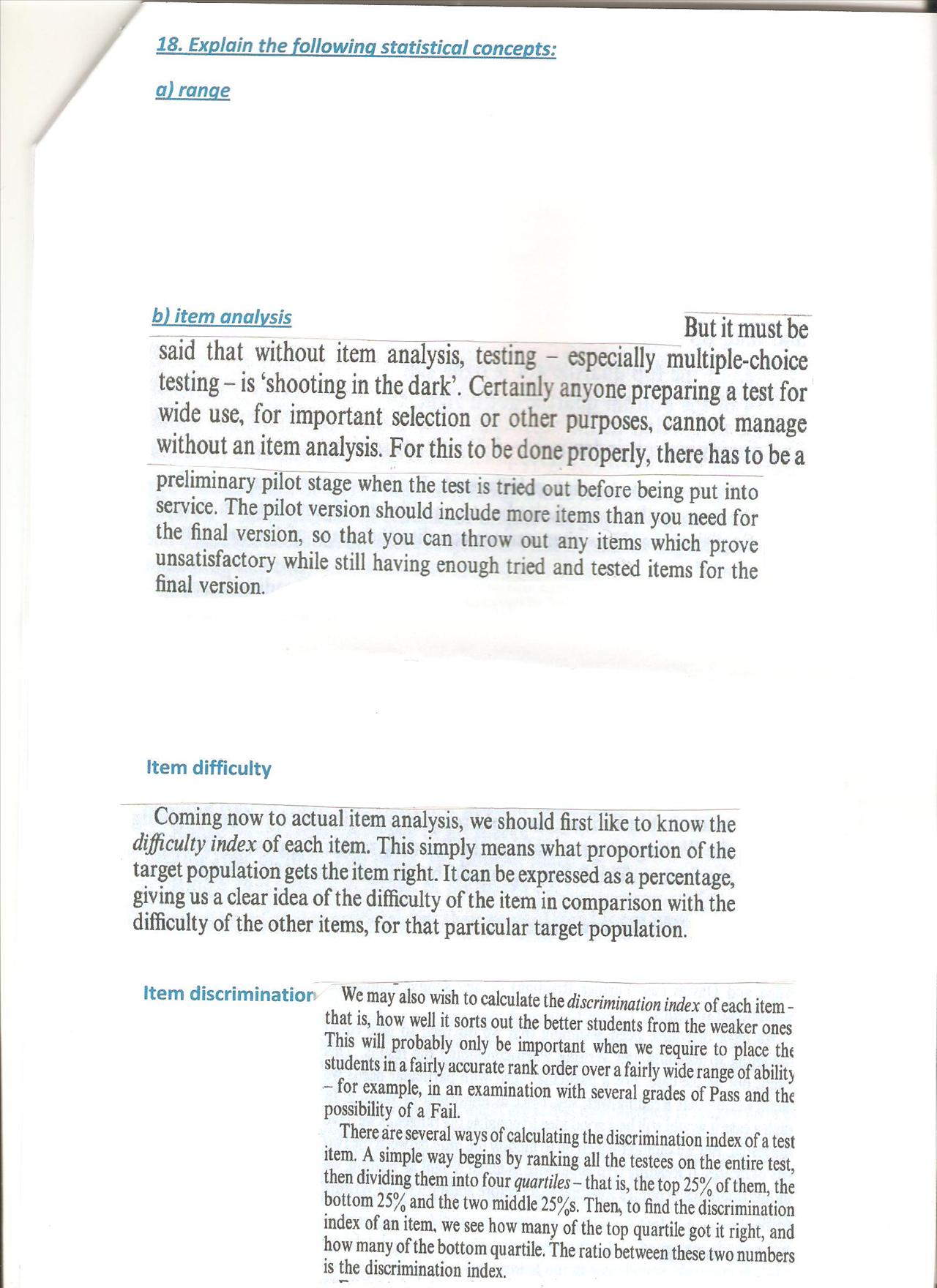Obraz (126)

/
18. Exolain the followina statistical conceots: a) ranae
b) item analysis But jt mUSt be
said that without itera analysis, testing - especially multiple-choice testing - is ‘shooting in the dark\ Certainly anyone preparing a test for wide use, for important selection or other purposes, cannot manage without an item analysis. For this to be done properly, there has to be a
preliminary pilot stage when the test is tried out before being put into service. The pilot version should include morę items than you need for the finał version, so that you can throw out any items which prove unsatisfactory while still having enough tried and tested items for the finał version.
Item difficulty
Corning now to actualitem analysis, we should first like to know the difficulty index of each item. This simply means what proportion of the target population gets the item right. It can be expressed as a percentage, giving us a elear idea of the difficulty of the item in comparison with the difficulty of the other items, for that particular target population.
Item discriminatior We may also wish to calculate the discrimination index of each item -
that is, how well it sorts out the better students from the weaker ones This will probably only be important when we reąuire to place the students in a fairly accurate rank order over a fairly wide rangę of ability - for example, in an examination with several grades of Pass and the possibility of a Fail.
There are several ways of calculating the discrimination index of a test item. A simple way begins by ranking all the testees on the entire test, then dividing them into four quartiles- that is, the top 25% of them, the bottom 25% and the two middle 25%s. Then, to find the discrimination index of an item, we see how many of the top ąuartile got it right, and how many of the bottom ąuartile. The ratio between these two numbers is the discrimination index.
Wyszukiwarka
Podobne podstrony:
img023 (22) Describing statisticsGrammar The following linę graph shows the unemployment ratę (perce
SYMBOLS SICNES CONYENTIONNELS The following standard symbols are used in Statistics Canada publicati
76288 S6302016 0:0$ 560 1/18? $057 7825e-9 31150-8 {f «ll in the following secSons (r
Obraz (6)(2) 11 -ist What are the following people? (a) An ornilhologist thl A drainalist to) A
18,19 16 SECTION 31The urinary system Fili in the missing verbs in the following text. Choose from t
f11 7 MFC AppWizard - Step 6 of 6jx
f13 8 New Project Information 3 ISAPI Extension Wizard will create a new skeleton project with the f
f14 16 E New Project Information AppWizard will create a new skeleton project with the following
f16 6 E3 New Project Information AppWizard will create a new skeleton project with the following
f17 1 E3 New Project Information AppWizard will create a new skeleton project with the following
f19 2 New Project Information m AppWizard will create a new skeleton project with the following
f31 2 New Project Information 3 AppWizard will create a new skeleton project with the following
f6 1 New Project Information m AppWizard will create a new skeleton project with the following
f9 3 E3 New Project Information AppWizard will create a new skeleton project with the following
gram 2 I. The following noncount nouns can be converted into count nouns. What is O— ocSLA-w c> (
więcej podobnych podstron